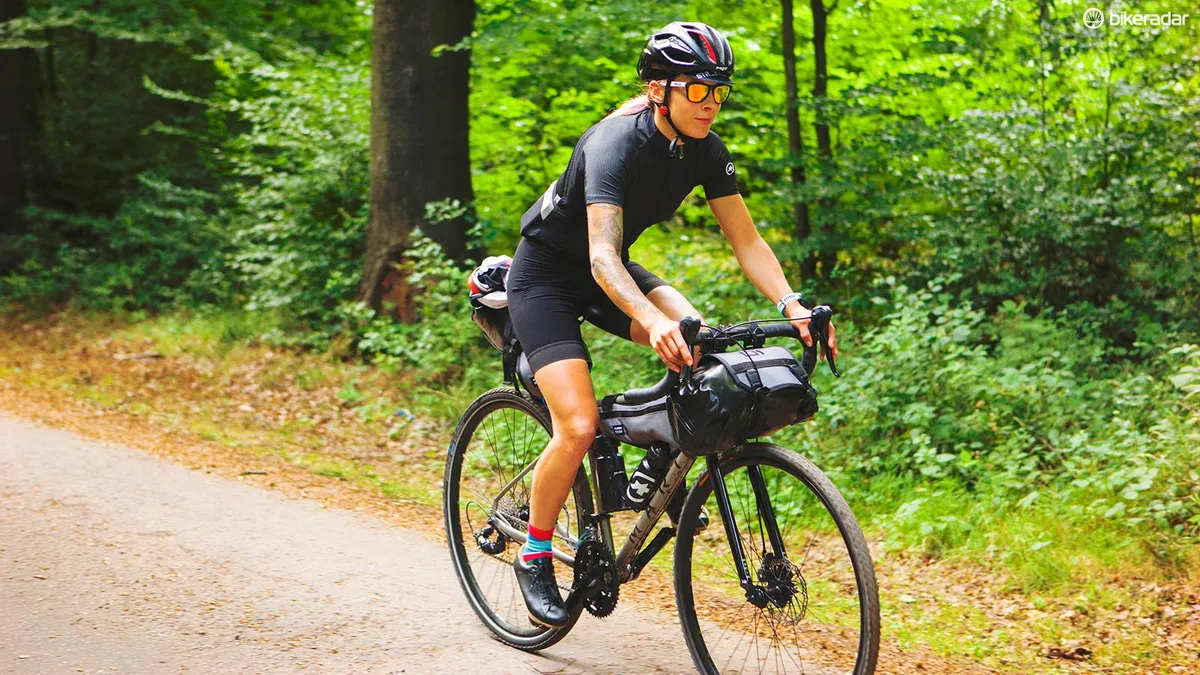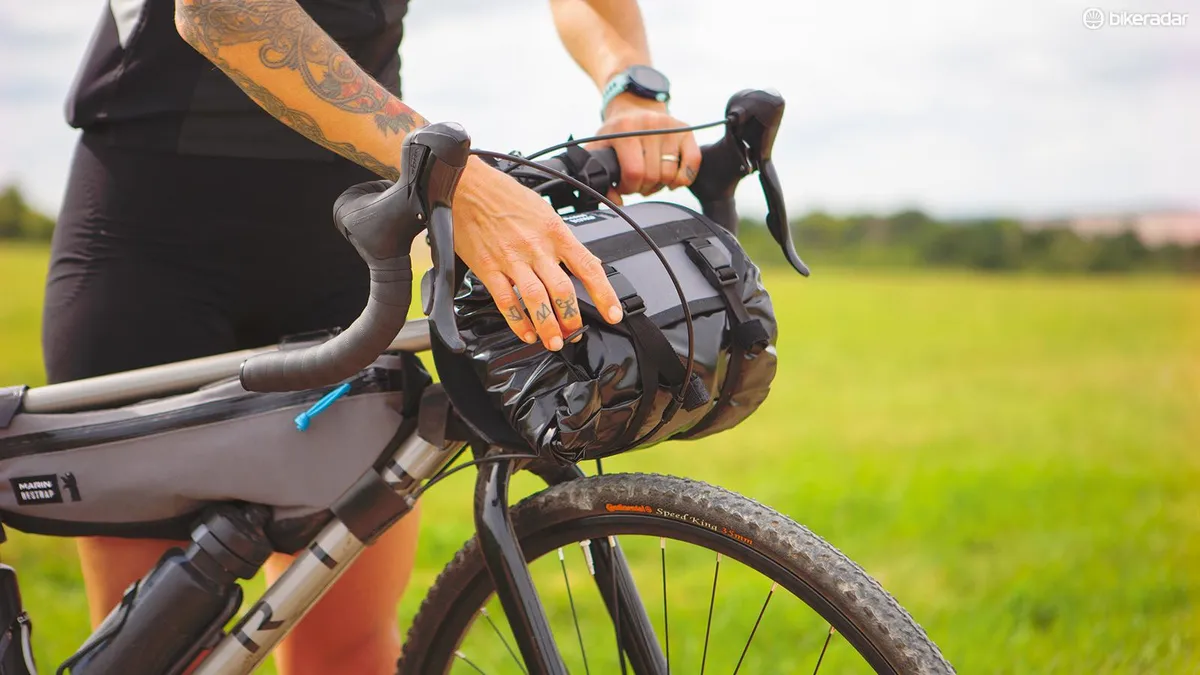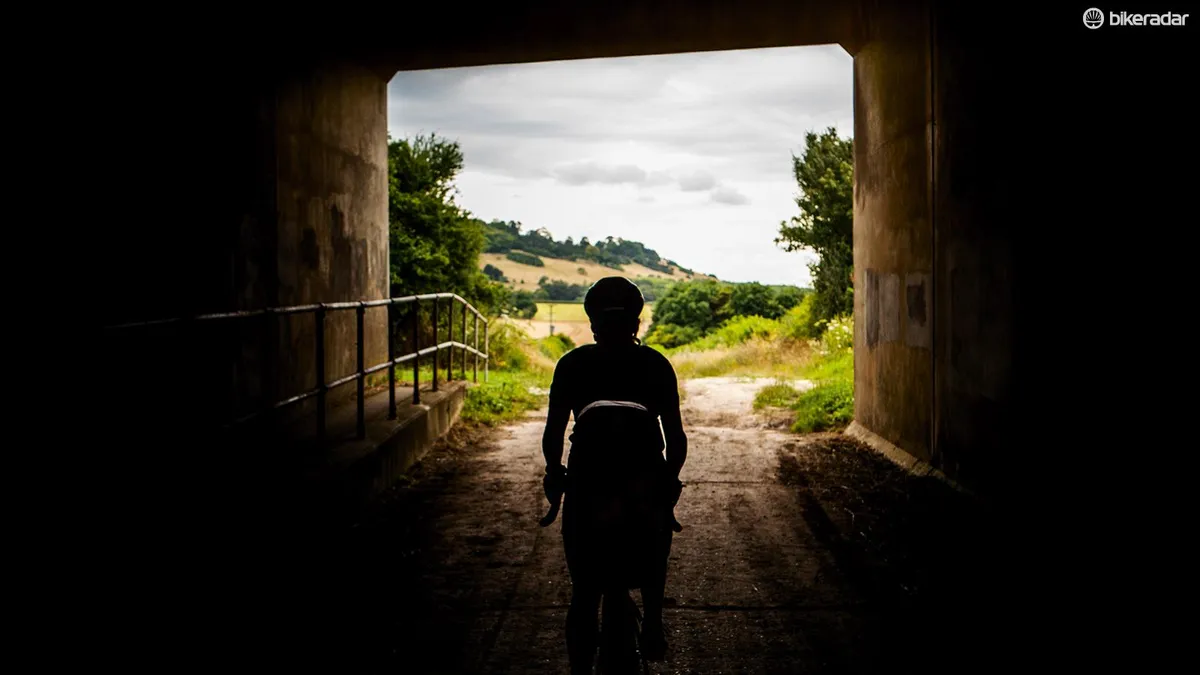Some ideas are just so good that you wonder why they took quite so long to hit the public consciousness. Take bikepacking, while we’ve all known for years that holidays with bikes are the best, this souped-up version of cycle touring has only recently fully hit its stride.
In a climate that has seen ‘adventure,’ the outdoors and camping gain new enthusiastic followers keen on documenting and sharing their escapades via blogs and social media, a desire to get off the beaten track has inspired cyclists to reimagine the self-supported, point-to-point ride.
Races such as the Transcontinental [self-supported, ultra-distance race across Europe] have gripped our imagination, while showcasing the improved agility, performance and handling of bikes fitted with a new breed of lightweight equipment.
Whereas once, cycle touring was strictly tarmac based and involved substantial and weighty racks and panniers, bikepacking uses a new breed of lightweight bags, which make leaving the road infinitely more appealing.
Fit for purpose

Another recent phenomenon, the ‘gravel bike’ has further helped facilitate the new bikepacking revolution. Designed to tackle light off-road conditions while still delivering performance on the road, gravel or adventure bikes are a hybrid of a cyclocross and touring bicycle with disc brakes to provide the power necessary to stop a fully laden machine.
Wider tyres that can cope with multiple surfaces and a slacker head-tube angle add comfort, leaving you free to choose the path less travelled and access dirt roads and bridleways that are inaccessible to other vehicles.
It was with this versatility in mind that I selected the route for my first bikepacking excursion, choosing the iconic Ridgeway route for its varied terrain and surfaces, from woodland and open downs to picturesque villages and heritage sites and a mixture of gravel, tarmac, hard-packed chalk, grass and mud.

The 5,000-year-old 87-mile trail is described as Britain’s oldest road and runs from Ivinghoe Beacon in the Chiltern Hills to Avebury, Wiltshire passing many Neolithic sites on its way, such as Iron Age forts and the 3,000-year-old chalk White Horse on the hill at Uffington, Oxfordshire.
When it came to choosing a bike, the sheer number of options available, from off-the-peg numbers to beautifully lugged custom steel bikes, was somewhat overwhelming.
Those who enjoy cycle touring have always loved steel, but when it comes to bikepacking, carbon is also a viable option; because you’re carrying less weight you can use a lighter, more racy machine.

From a vast array, I plumped for a Marin Four Corners, a steel off-the-peg feature-packed bike with plenty of clearance and geometry designed for all-day comfort.
One of the greatest things about this form of travel as opposed to, say, hiking, is the distances you can cover on a bike
Though many gravel bikes have eyelets for racks (and mudguards/fenders) bikepacking typically relies on rackless pack systems, and my bike was no exception.
I went for a supersized saddle bag, a frame bag and handlebar bag filled with just enough kit to manage for the duration of my trip — the idea being to travel as lightly as possible rather than be limited by my cargo.
Lighten your load
Advances in technology have brought ultra-light hiking equipment within reach of the general public so like many before me, I’d packed a lightweight sleeping bag and titanium stove.
Though I’d heard bivvy bags, tarps and hammocks are popular among those wishing to keep weight as low as possible, I favoured a miniscule tent, not wishing to risk a drenching.

Bike and bags sorted, I hopped aboard my steed clutching a Ridgeway trail map, figuring I’d leave the world of phones and mobile reception behind for a couple of days of unfettered freedom.
Even before I’d begun pedalling I felt a deep sense of relief as I surveyed the landscape from the top of Ivinghoe Beacon, the Chilterns beckoning. In our busy lives, a whole day on the bike, from dusk until dawn feels like luxury.
One of the greatest things about this form of travel as opposed to, say, hiking, is the distances you can cover on a bike, travelling further off the beaten track than you can on foot in a shorter amount of time.
If you’re looking to explore an entire country or region rather than a small patch of wilderness or lone mountain range, bikepacking allows you to cover distances ranging from 10 to 100 miles in a day. But you don’t have to go off into the depths of the wilderness; the back lanes, woods and moorlands are all within reach for most of us in the UK.

A single night away is all you need for a break from the norm and 24-hour ‘micro- adventures’ are increasingly popular for those of us struggling to get away.
When planning an adventure it pays to be prepared, but an open mind is a must when you are at the whim of the weather
After a brief stint on a busy main road I turned onto a bridleway, enjoying forest tracks and trails with the surface switching between hard-packed dirt, grass, a lot of very sharp, flinty gravel and some chalk. My setup took it all in its stride, my legs less so — sometimes going was slow as I lost a lot of momentum bouncing on the uneven surface.
With food, drink and clothing on board, I was only constrained by daylight and fatigue. Carrying a stove in my bag, I didn’t need to wait until I reached a town to have a coffee break so when I saw a nice view I pitched up, brewed up and enjoyed a cuppa al fresco.
Having a shelter to hand gave me great flexibility, allowing me to savour the journey and unhurriedly explore market towns when I reached them, though I could equally well have chosen to largely avoid civilization.
Staycation
The Americans may have thousands of kilometres of gravel trails and forest tracks, but we’re pretty well served here in the UK too, with an extensive network of bridleways and permissive routes.
When it comes to camping out, we don’t have it quite as easy, as it’s illegal to camp in the wild without the landowner’s permission (the exceptions being Dartmoor in Devon and all of Scotland). That said, some farmers are open to the idea of you pitching up for one night if you ask nicely.

In high, remote places away from farmland, wild camping is sometimes possible providing you steer well clear of paths and leave no trace, but it’s important to check beforehand that you don’t camp in any areas of a delicate ecological nature. As a rule of thumb, it’s best to pitch late and leave early, which is what I did. Or you can simply head to a campsite — there are no rules with bikepacking.
When planning an adventure it pays to be prepared, but an open mind is a must when you are at the whim of the weather, the terrain and your own body. Ordnance Survey maps are invaluable when it comes to planning as permissive routes and bridleways are clearly marked, though it’s worth getting to grips with interpreting maps correctly by reading contour lines and scale to minimise the risk of wasting time and energy on unrideable sections.

Bikepacking’s minimalist equipment and self-sufficiency feel particularly liberating. Rolling into Avebury after a couple of days out on the trails, I felt a sense of elation that a regular mini-break could never deliver, while the freedom to leave the lanes and explore areas normally inaccessible to road bikes made me see my surroundings in a whole new way.
Once you have the requisite kit it’s a cost-effective holiday choice that offers the ultimate in flexibility. So if you like being outdoors, riding a bike and camping, go bikepacking. It’s good for the legs, lungs and heart, but most of all, for the soul.
Plan your bikepacking holiday…
Getting started
Provided you have a suitable bike, your main expenditure is likely to be on luggage and a shelter.
Luggage
There are numerous companies making rackless pack systems in a variety of shapes and sizes to fit most frames, or you can have bags custom made to maximise the space available to you. Companies such as Restrap, Apidura, Alpkit and Ortlieb have a vast selection.
Clothing
Take thin layers, cycling shorts and a waterproof jacket. If you’re going for more than a few days then flip-flops are great; it’s bliss to remove your bike shoes at the end of the ride, and they allow you to air and dry your shoes. If you can, wear mountain bike shoes, as they’re easier to walk in should you need to get off and push your bike over a tricky section.
Camping
Look for a lightweight, compact tent or consider a waterproof bivvy bag or hammock to save space. Down sleeping bags are light and pack up small. For a true taste of luxury, consider an inflatable air mattress such as a Thermarest.
Where to store kit
Tents, shelters and sleeping mats do well in a saddlebag attached to the seatpost and rails, and it makes sense to stuff clothing in here too. The bar bag is ideal for a sleeping bag and your cooking equipment, just be sure to check it doesn’t rub on the wheel when fully loaded or prevent you shifting properly if you use narrow bars.
The frame bag is best reserved for food, sunglasses, maps and things you need to access easily — a multi-tool, chain breaker and spare chain link are essential, as are a tyre boot, spare tubes and puncture repair kit. Water should always be attached to the frame rather than carried in bags.
It’s best to pack items tightly to give your bags some structure and prevent them sagging and swaying all over the place. Waterproof stuff sacks are very useful too.




